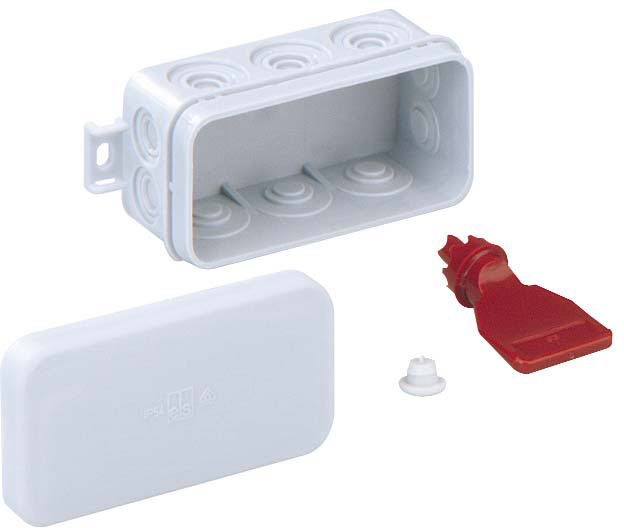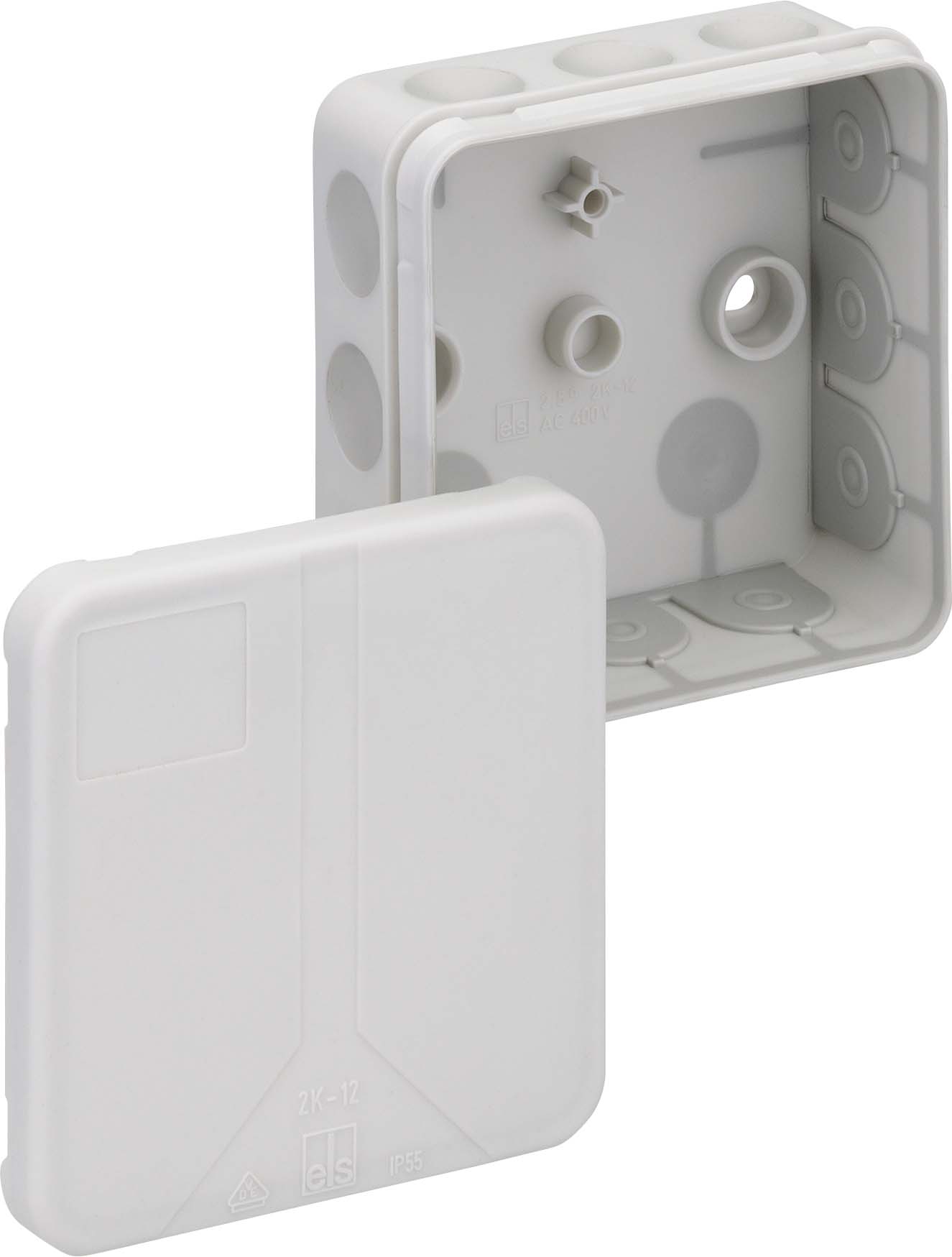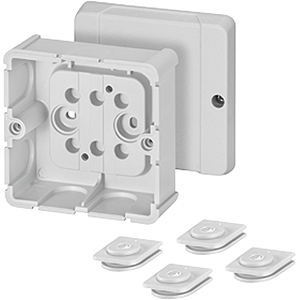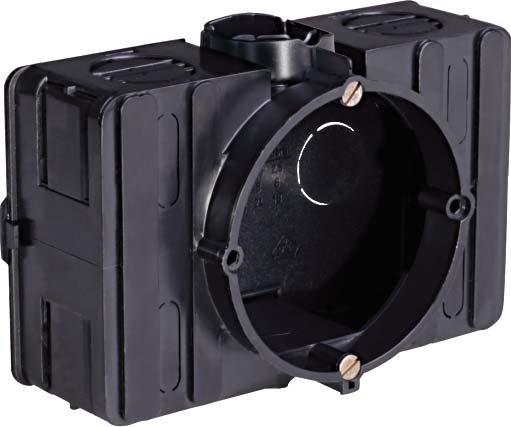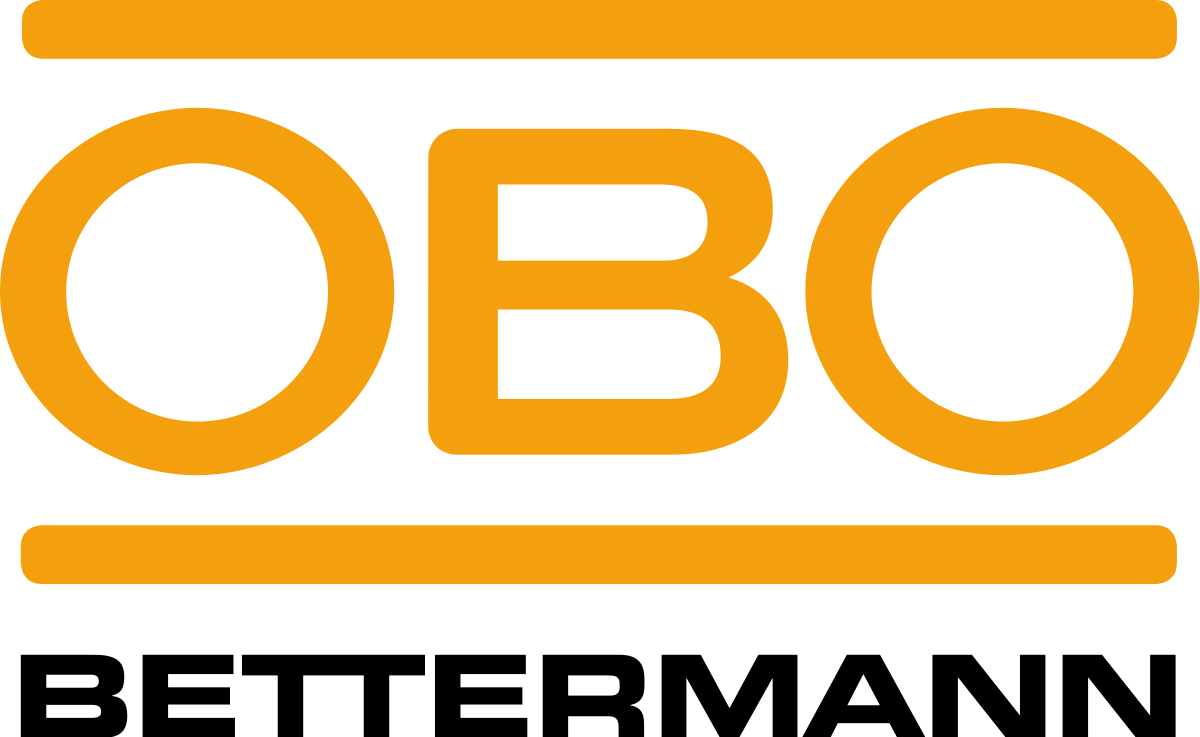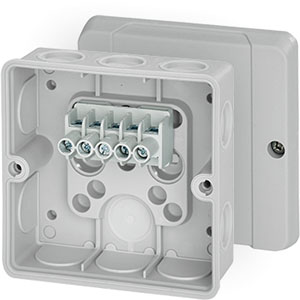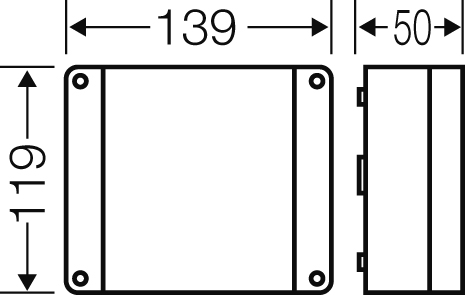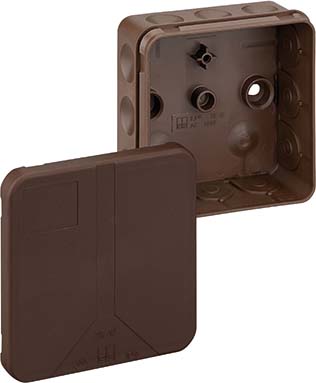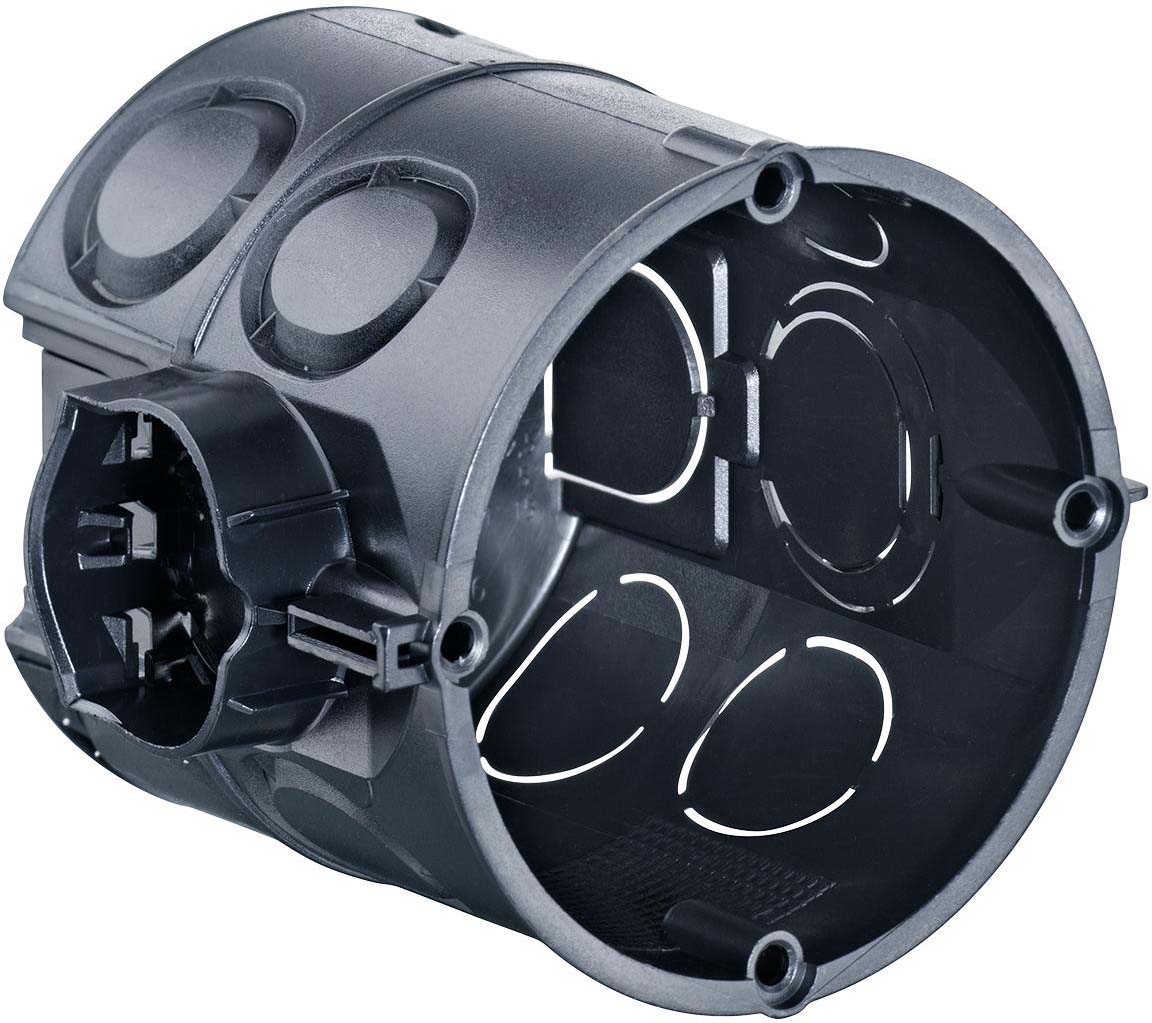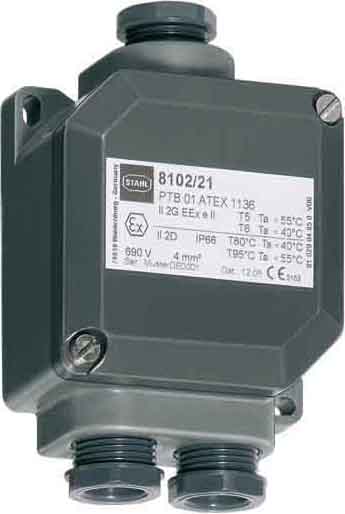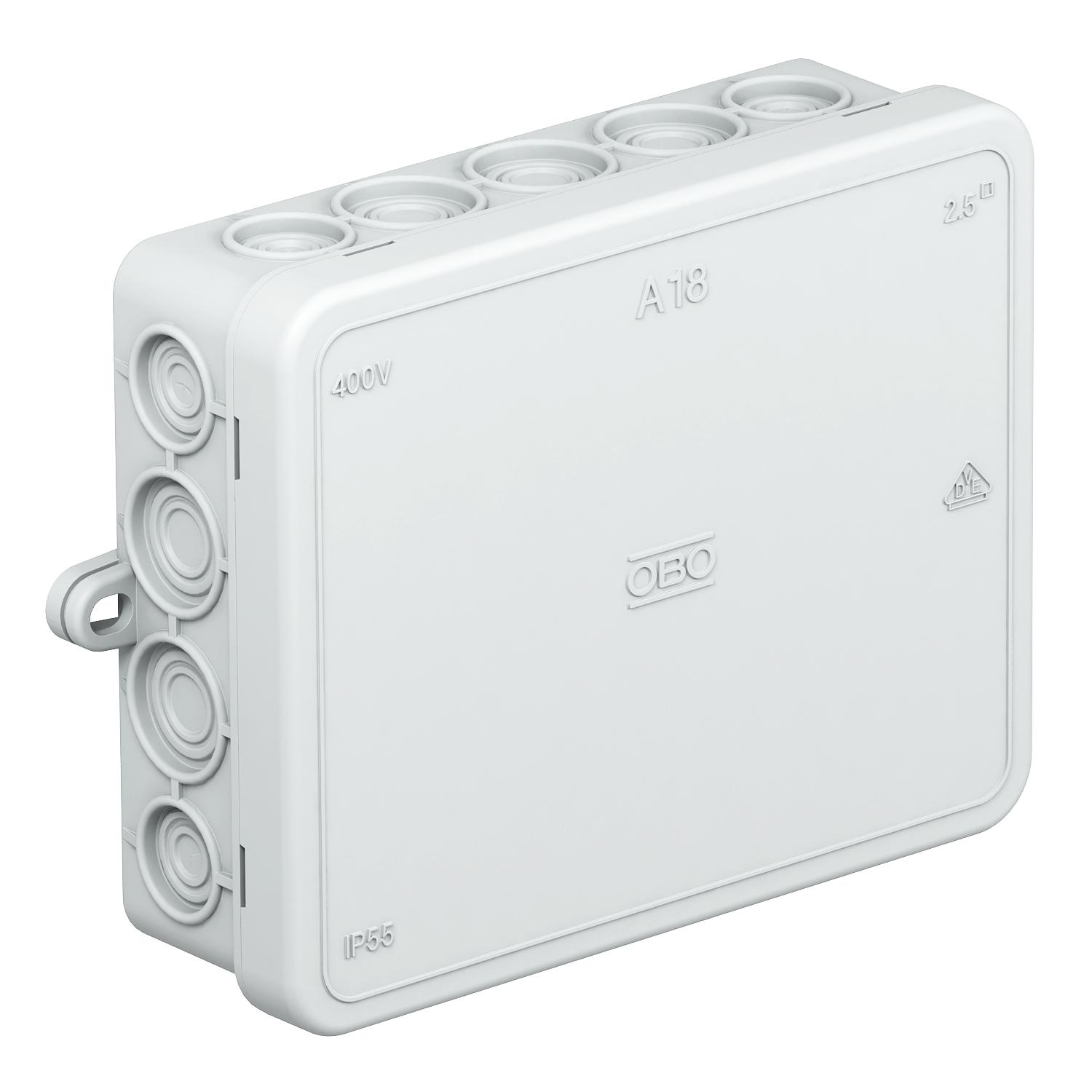Junction boxes
A junction box is an electrical junction box that connects, distributes or branches off cables. In electrical installations, it plays an important role in connecting or branching off circuits. We stock junction boxes from well-known manufacturers such as Spelsberg, Gira and Hensel in various designs. Discover the entire range now!

- Comprehensive advice & support
- over 10,000 articles in the shop
- Shipping in 24 hours
- thousands of satisfied customers

KATHRIN BRANDT
Employee Purchasing from TroisdorfGreat advice and friendly service. I was helped immediately and competently with any questions. Gladly again.

OMAR NASER
Office Manager from Frankfurt a.M.Goods are well packaged and arrive safely, which is important to me. My mail was answered immediately.

RAINER SEIDEL
Master carpenter from WiesbadenHad to replace a lamp, but the same was no longer available. Great advice, found a suitable replacement and delivered it quickly.
What is a junction box?
Junction boxes, also known as junction boxes or installation boxes, are used in electrical installations. They are used to clamp and bring together various cables and lines, regardless of whether they are lines from sockets, lighting or other components. They can also insulate electrical connections and protect them from external influences. Electricians can use junction boxes to organize circuits to ensure safe electrical installations. Junction boxes are used in particular where junction boxes, universal or empty enclosures with larger or higher lids are unsuitable. Their versatility makes them popular for use in various indoor and outdoor applications.
The structure of a junction box
The junction box consists of several components. The housing forms the outer frame to protect the electrical contents inside the junction box. The housing is usually made of materials such as plastic or metal. The cover of the junction box can be removed to gain access to the internal connections. Depending on the case, the cover of the box is secured with a few screws or other fastening elements. Another element of a junction box is the terminal. The terminals are located inside the box. The cables can be fixed and connected there. Sealing elements are also used in some junction boxes to protect them from moisture or dirt. The seals are often made of silicone or rubber. There are also fixing holes on the outside of the box to allow the box to be securely mounted.
The different types of junction boxes
Different types of junction boxes are required depending on the requirements. You can find the most common types of boxes here:
- Switch boxes: Switch boxes are special junction boxes that are particularly suitable for installing switches or sockets.
- Damp-proof junction boxes: Damp-proof junction boxes are particularly suitable for use in damp or even wet environments such as bathrooms, kitchens or outdoor areas, as they are particularly robust and offer more protection against moisture.
- Surface-mounted junction boxes: Surface-mounted junction boxes are mounted above the surface and are therefore suitable for installations that do not require installation in a wall or ceiling.
- Flush-mounted junction boxes: These installation boxes are the best choice for inconspicuous electrical installations. This is because flush-mounted junction boxes are flush-mounted directly into the wall or ceiling so that they are flush with the surface.
- Cavity wall boxes: These junction boxes are suitable for cavity walls, as they have special mounting options in drywall or plasterboard walls.
- Ex-protected junction boxes: Ex-protected junction boxes are used in hazardous areas that are even at risk of explosion. Strict safety precautions are necessary there.
What you should look out for when buying a junction box
If you want to buy a junction box, you need to consider which type is suitable for your functions and whether they meet the local requirements. We have put together the most important points you should consider when buying your junction boxes:
- The capacity of the junction box: when choosing the right box, you should make sure that it fulfills the required number of connections. Always pay attention to the capacity to avoid overloading the junction boxes. The size and height also play a role so that all cables can be stowed in the junction box. - The area of use: Check whether your junction box is suitable for the desired use, for example for damp rooms, indoors or outdoors.
- Type of installation: Do you need a special type such as a cavity wall box? Is surface-mounted or flush-mounted installation necessary?
- The material of the junction box: The material of the housing should be suitable for the environmental conditions of the installation. Of course, the workmanship should also be of high quality.
- Connection types: When choosing the junction box, also pay attention to what type of connection blocks or terminals are available. Depending on the type, these can be screw terminals, spring terminals or plug-in terminals.
- Applicable standards and regulations: Which standards must be taken into account when installing the appliance box? Also make sure that applicable standards are taken into account.
- Specific functions: Are special functions required such as sealing against moisture or integrated strain relief?
Overall, you should rely on junction boxes from renowned brands in order to obtain a well-made and safe product.
The installation of a junction box
When installing a junction box, you must follow several steps to create secure connections. The following steps are a guide on how to carry out the installation and wiring. However, it is advisable to hire a competent and trained electrician to carry out these tasks, as there is a risk to life if they are not carried out correctly.
- preparation: Before installation, you need to plan where the junction box will be placed and which cables you need to branch off. Also check whether the junction box is suitable for the desired functionality. Have all the tools and equipment you need for installation ready. This includes switches, cables, screws, rubber sleeves, of course the junction box itself and tools for stripping and cutting the cables.
- installation: Now place the junction boxes in the selected location. The box should be stable and secure during installation.
- wiring the circuit: Follow your electrical installation plan to wire the circuit. To do this, feed the cables and wires into the junction box and use rubber sleeves for a secure seal. Connect the cables according to the circuit, for example for a simple switch-off or cross circuit.
- branch off and connect: Now connect the cables or branch them off. To do this, use the existing terminals or connection blocks, whereby you can prefer screwless terminals or plug-in terminals. Make sure that the connections are tight.
- Check and put into operation: Once the wiring is complete, check everything again for faults. A check in accordance with the VDE regulations is also recommended. Now you can switch on and test the circuit.
Buy junction boxes at WATT24
In the WATT24 online store you will find an extensive selection of junction boxes from various brands such as Spelsberg and models. Simply order them online and have them conveniently delivered to your doorstep. We also offer other accessories and components for electrical installations and lighting technology. At WATT24, we place great emphasis on quality, reliability and first-class customer service to ensure that you find the right product quickly. Choose WATT24 and benefit from numerous advantages, including
- Fast delivery: Your order will be delivered quickly so you don't have to wait long.
- Simple and secure ordering process: Our online store ordering process is intuitive and secure to ensure your safety.
- Large product range: Discover our diverse selection that covers all your individual needs.
- Outstanding brand quality: We only stock high-quality products from leading brands.
WATT24 is your reliable source for high-quality electrical products and accessories, supported by first-class service for an uncomplicated shopping experience. Find the right junction box for your application now and buy online directly from WATT24!
FAQ: Frequently asked questions about junction boxes
Is a junction box mandatory?
In many electrical installations, it is necessary to use junction boxes. This is because cables can be connected, distributed or branched off in this way. The use of a junction box is not a necessary requirement in all cases. Whether a junction box must be used depends on the specific applications and requirements of the local building regulations. Always find out in advance what the standards for electrical installations are.
How many circuits are allowed in a junction box?
How many circuits are allowed in a junction box depends on several factors, including the size of the appliance box, the type of terminals and applicable regulations. Normally, however, no more circuits should be brought together in a junction box than the box can safely accommodate. Otherwise there is a risk of overloading. Always observe the manufacturer's specifications and applicable standards.
What are junction boxes?
Junction boxes are enclosures that are used to protect electrical connections. They are larger than junction boxes and therefore offer more space and flexibility during installation. They are made of materials such as metal or plastic and have openings to feed cables through, where you can then connect and branch them off. The openings have rubber sleeves or other seals to protect them from moisture. Junction boxes help to eliminate hazards such as short circuits and collect electrical connections in one place. Distribution boxes, on the other hand, are used to distribute and organize electrical circuits. They can conduct different circuits from one power source.


